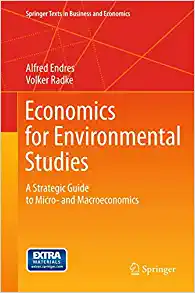


help will be appreciated please
economics question quiz Consider the following sequence problem V (ao, wo) = max E B'u(c.) (5) S.I ao + Eq'w = Eq's (6) 1=0 1=0 W/1= (1 -0)w + ow (7) (a) For which value of & does (7) converge to a unique fixed point? What is the value of this fixed point? (b) Define 00 a, = >9'(Cits - "its) $=0 Use this definition to show that the problem above has a recursive representa- tion. No formal proof is necessary, but explain the logic underlying Theorem 1 in this context. What interest rate do the "bonds" a, pay? (c) In a deterministic economy, such as the one above, it appears as if a one period bond is sufficient to allocate resources efficiently. Is this also true in a stochastic economy? Why or why not?3. (20 points) Consider the following economy. A continuum of individuals are born in period 0 with no resources. With idiosyncratic probability p, an indi- vidual will be employed in period 1, and with the complementary probability (1 - p) she will be unemployed. However, the agents have the opportunity of writing contracts with each other, promising the payment of some resources contingent on which state occurs. As they consume nothing in period 0, each individual's problem is given by max {pu(ci) + (1 - p)u(c2) } s.t. 0 = pib1 + p2b2 ci = bi + w C2 = 62 where c and ca denotes consumption at the employed and the unemployed state, respectively. bj denotes the quantity purchased of the asset (or contract) which pays bj units of the consumption good if the agent turns out to be employed. Similarly, by denotes the quantity purchased of the asset which pays by units of the consumption good if the agent turns out to be unemployed. (a) Is this a complete- or an incomplete markets economy? (b) What is the market clearing condition? And what are the market clearing prices? (c) What is aggregate (or average) consumption? Does it equal aggregate resources? 4. (20 points) Consider the following sequence problem, v* = max S stu(ct) (7) CL,St)120 1=0 s.t (8) at+1 = at (1 + r) + s (9) (10) 1=0 do,Wo given (11) (a) What conditions do you need on & and y in order to ensure that the sequence {w}, is bounded? 2 (b) Use the logic of Theorem 1 and derive the Bellman equation associated with the sequence problem. There is no need for a formal proof, but make sure you state the logical steps clearly (i.e. "prove" it verbally). (c) What are the first order conditions? Apply the envelope theorem.1. (5 points) Suppose that an agent will be employed in the next period with probability p. Symmetrically, the agent will remain unemployed with probabil- ity (1 - p). Suppose that an agent is unemployed in period 0. For how many periods can the agent expect to remain in unemployment (that is, what is her expected unemployment duration)? 2. (10 points) Consider the following Ramsey growth model augmented with a labor-leisure choice, and habits. max Btu(C. C-1, 4) (1) s.t at hit1 = f ( ke. ( ) (2) ko. C-1, 60 given (3) In class, however, we often considered problems of the type 1* = max (4) s.t (5) To given (6) (a) Define rt, F(., .) and I(.) such that these two problems coincide exactly. (b) What are the first order conditions to the problem in (1)-(3)? (c) What is the Bellman equation corresponding to the problem in (1)-(3)? (no proof needed)












